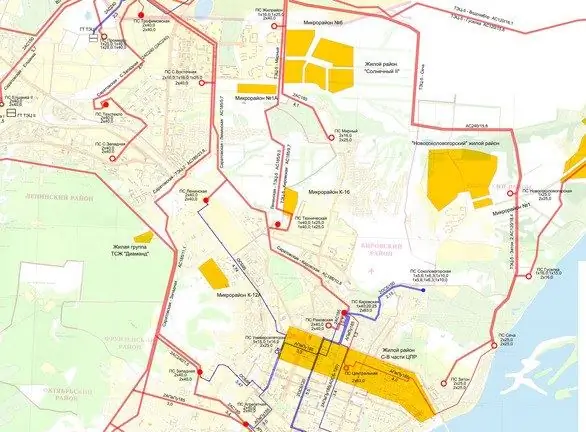- Author Antonio Harrison [email protected].
- Public 2023-12-16 07:44.
- Last modified 2025-01-22 21:44.
For a city to function normally and be comfortable for living, it must have an appropriate infrastructure. It is subdivided into social, engineering and transport. If you want to understand whether it is convenient to live here, you need to analyze each component.

It is necessary
background information about the city
Instructions
Step 1
Social infrastructure is the saturation of a settlement with such objects as schools, kindergartens, clinics and hospitals. Find out how many of these objects are in your area. What are the terms of service? Are there queues for schools and kindergartens?
Determine how far from your place of residence these social objects are. According to urban planning standards, they should be within walking distance, that is, within a 15-20 minute walk. Modern neighborhoods, as a rule, are built in compliance with these requirements. The historical center of the city does not always allow fulfilling the conditions of the Town Planning Code.
Step 2
Engineering infrastructure is communications for the supply of utilities. With a centralized water supply in the city, there is an extensive water supply system, which, as a rule, belongs to the local "Vodokanal". He is simultaneously engaged in water disposal, that is, sewerage.
Not all cities in Russia are supplied with gas, and where there are gas pipelines, not all houses can be connected to them. The electrification of the entire country was achieved in the last century. But power supply is far from being reliable and uninterrupted everywhere. Heat supply to housing can be organized according to different schemes. The urban engineering infrastructure includes main and intra-quarter heating networks with centralized heat supply, as well as boiler houses and their communications.
Find out how water, heat, gas and electricity are supplied in this city. Water problems arise in elevated areas and especially on the upper floors of multi-storey buildings with worn-out networks or low-power Vodokanal pumps. Gas supply is relevant for residents of houses no higher than 15 floors. Only electric stoves are installed in high-rise buildings, gas is prohibited there. In an apartment building, as a rule, there is a centralized heating supply. But recently, houses with apartment heating have begun to appear.
Step 3
Transport infrastructure is the saturation of the city with highways and intra-quarter roads. In many Russian cities, the existing transport network does not cope well with the constantly growing fleet of vehicles. But the situation is usually exacerbated by elements such as bridges, crossings, unregulated intersections and intersections with complex traffic management.
Find out how and in what directions the main intracity migration of the population takes place. What are the bottlenecks in the road network? And how will they fit into your itineraries? After such an analysis, we can conclude how comfortable it will be to use the existing urban infrastructure.






